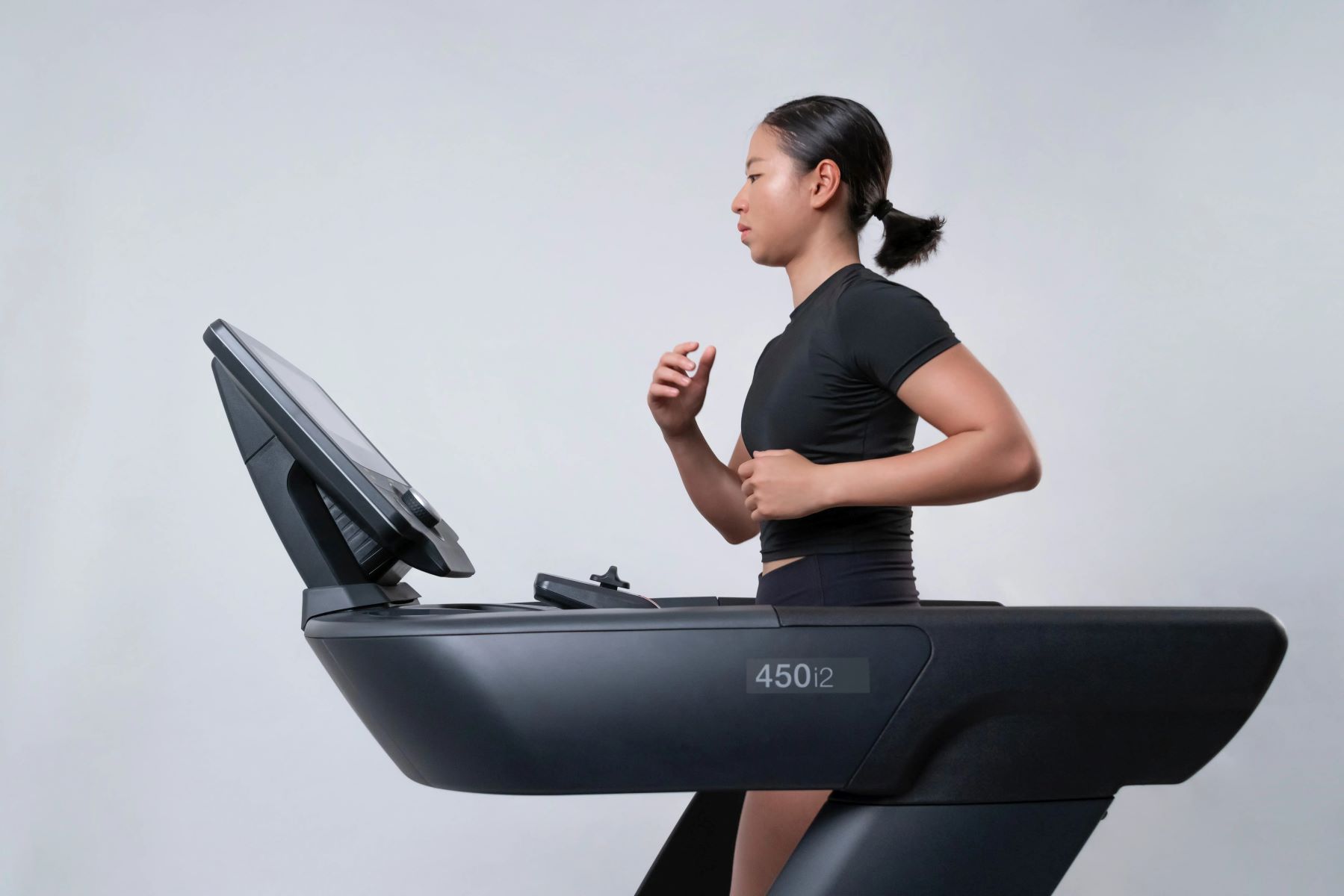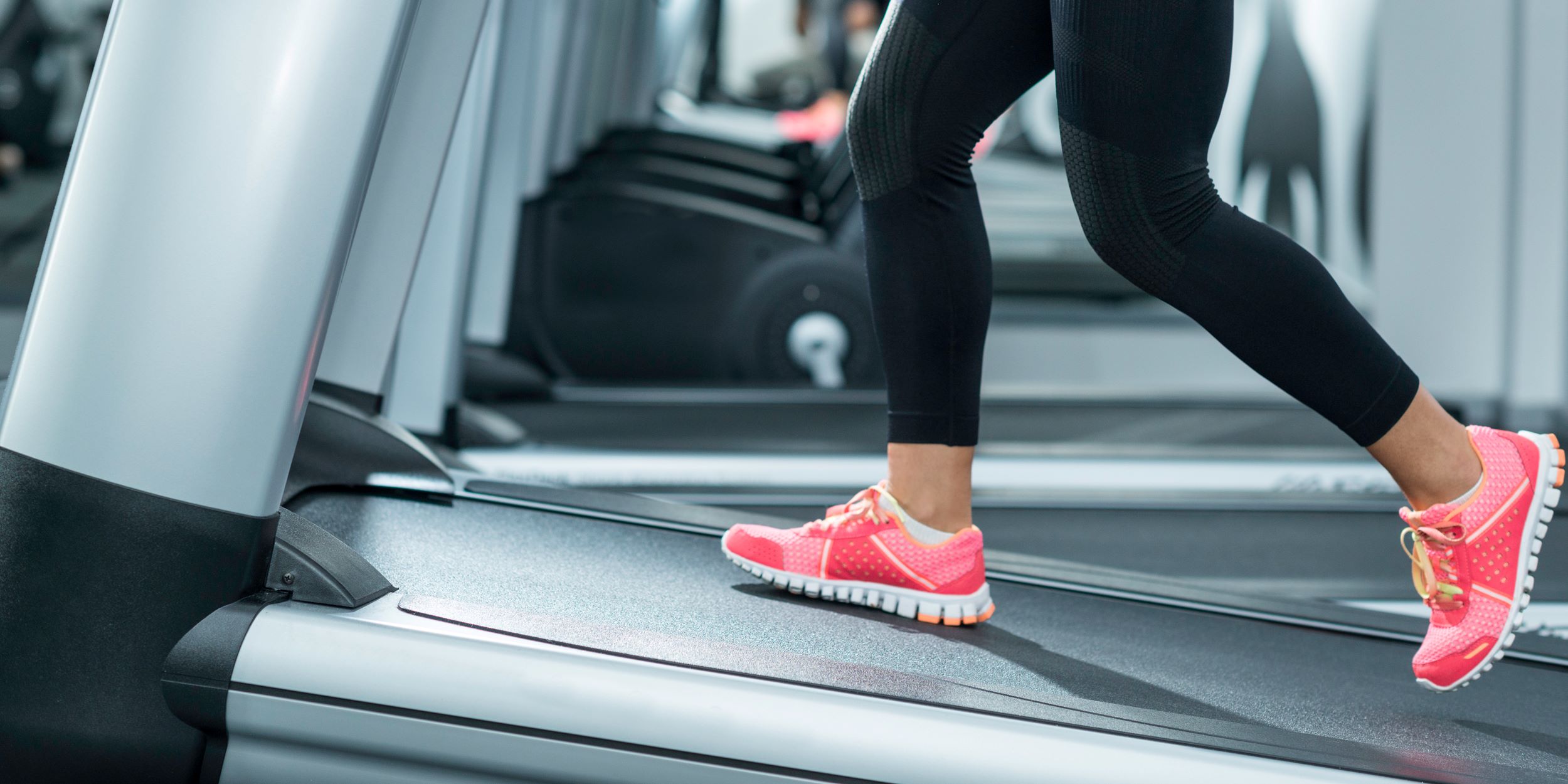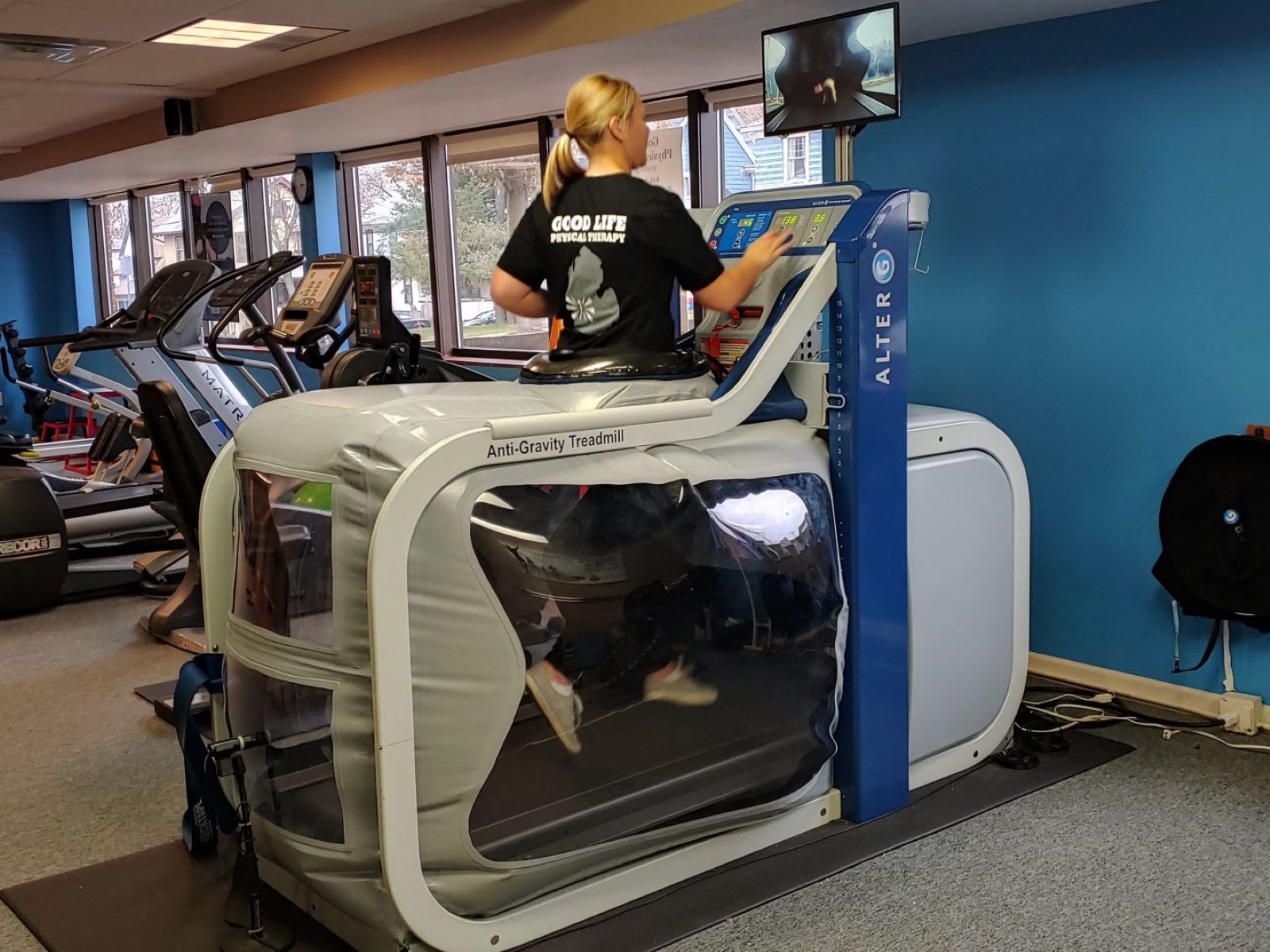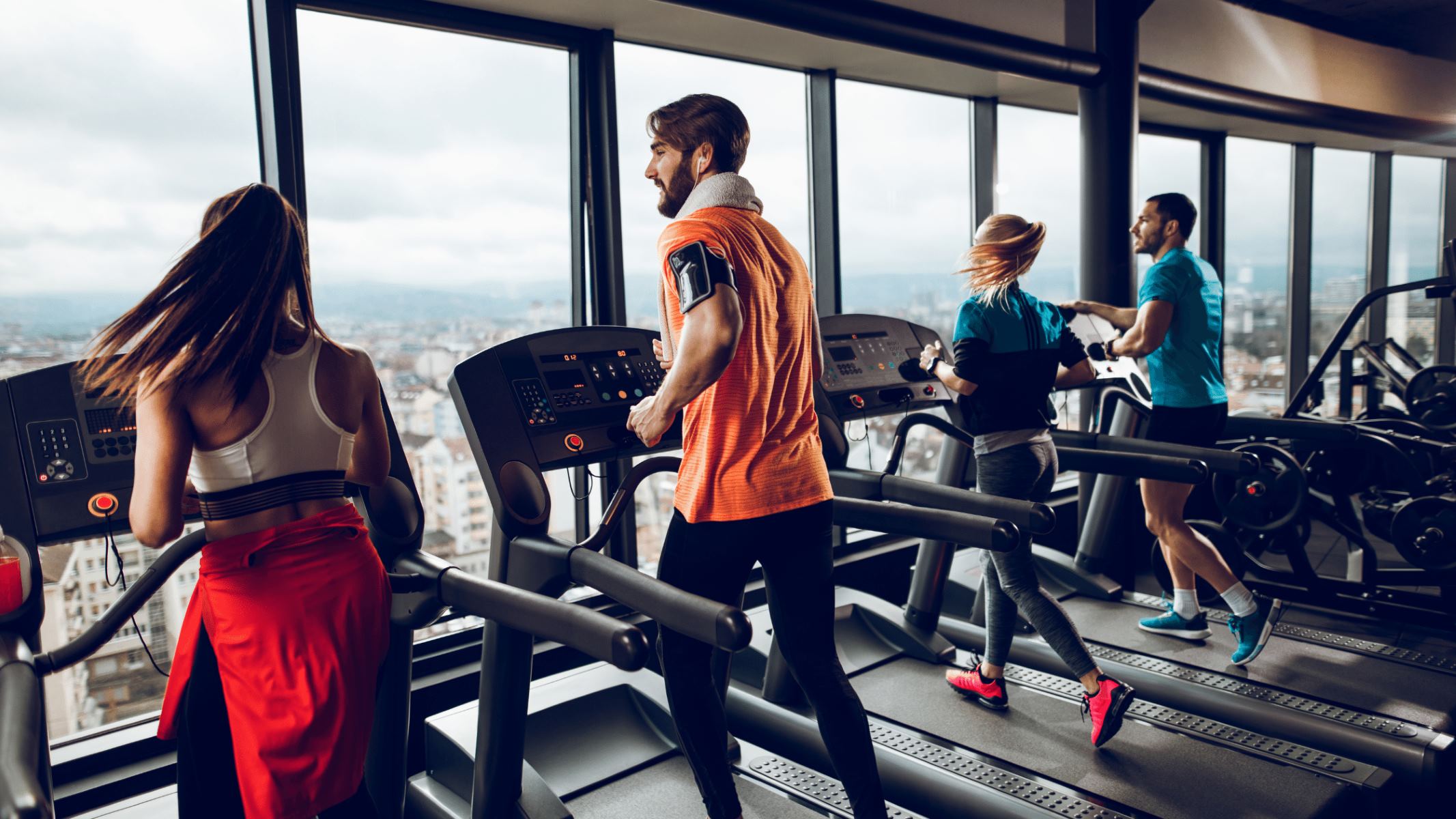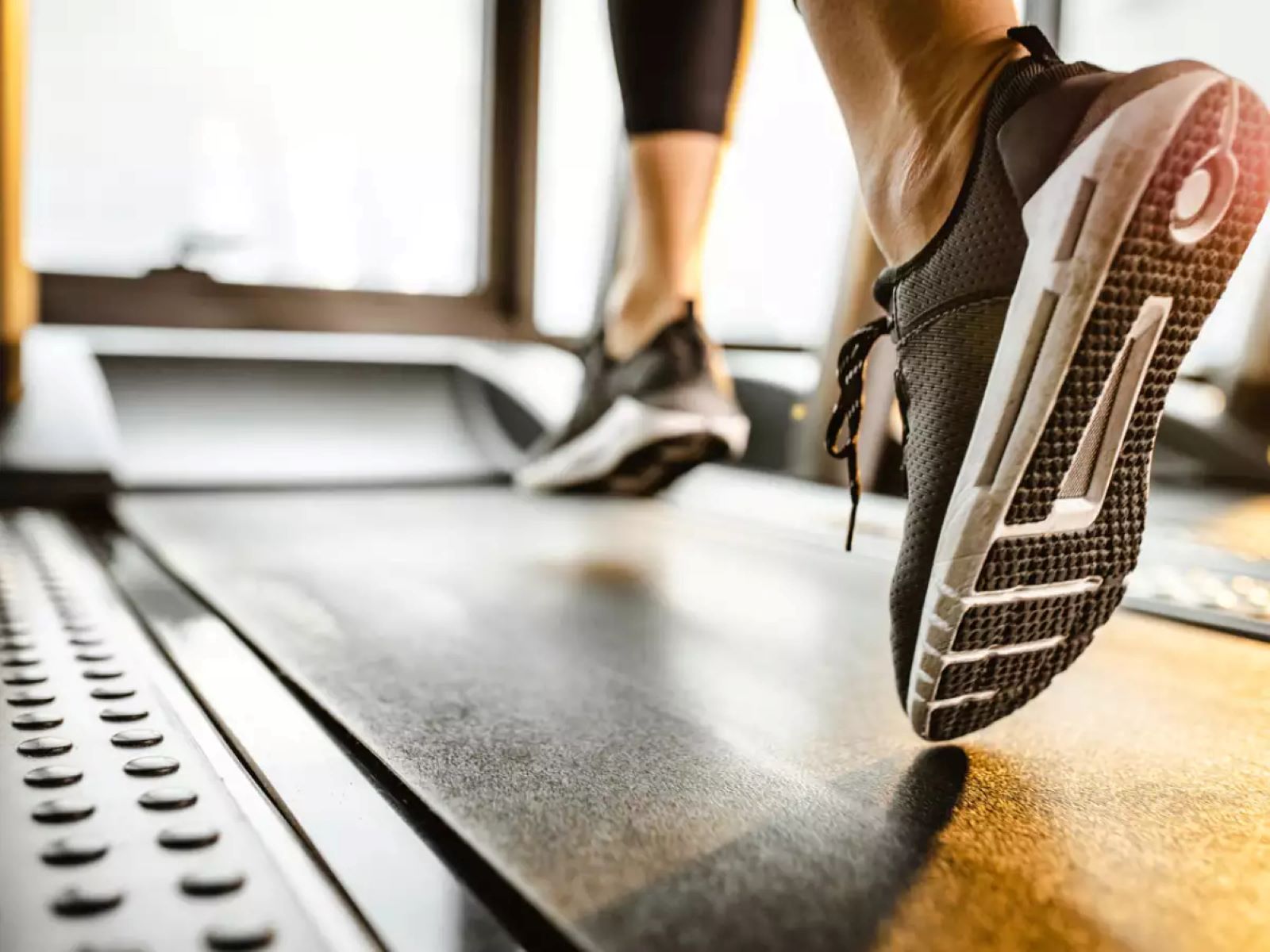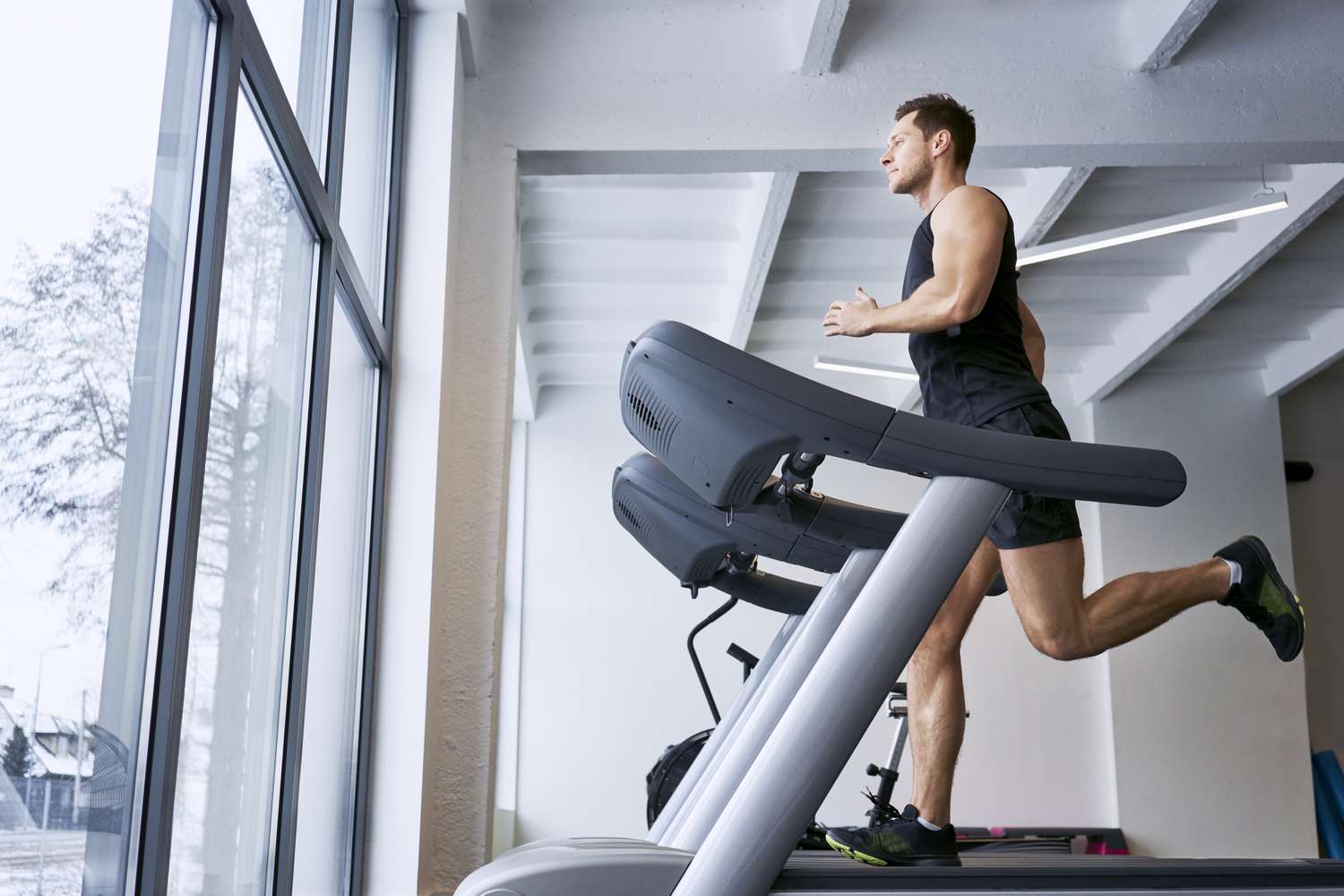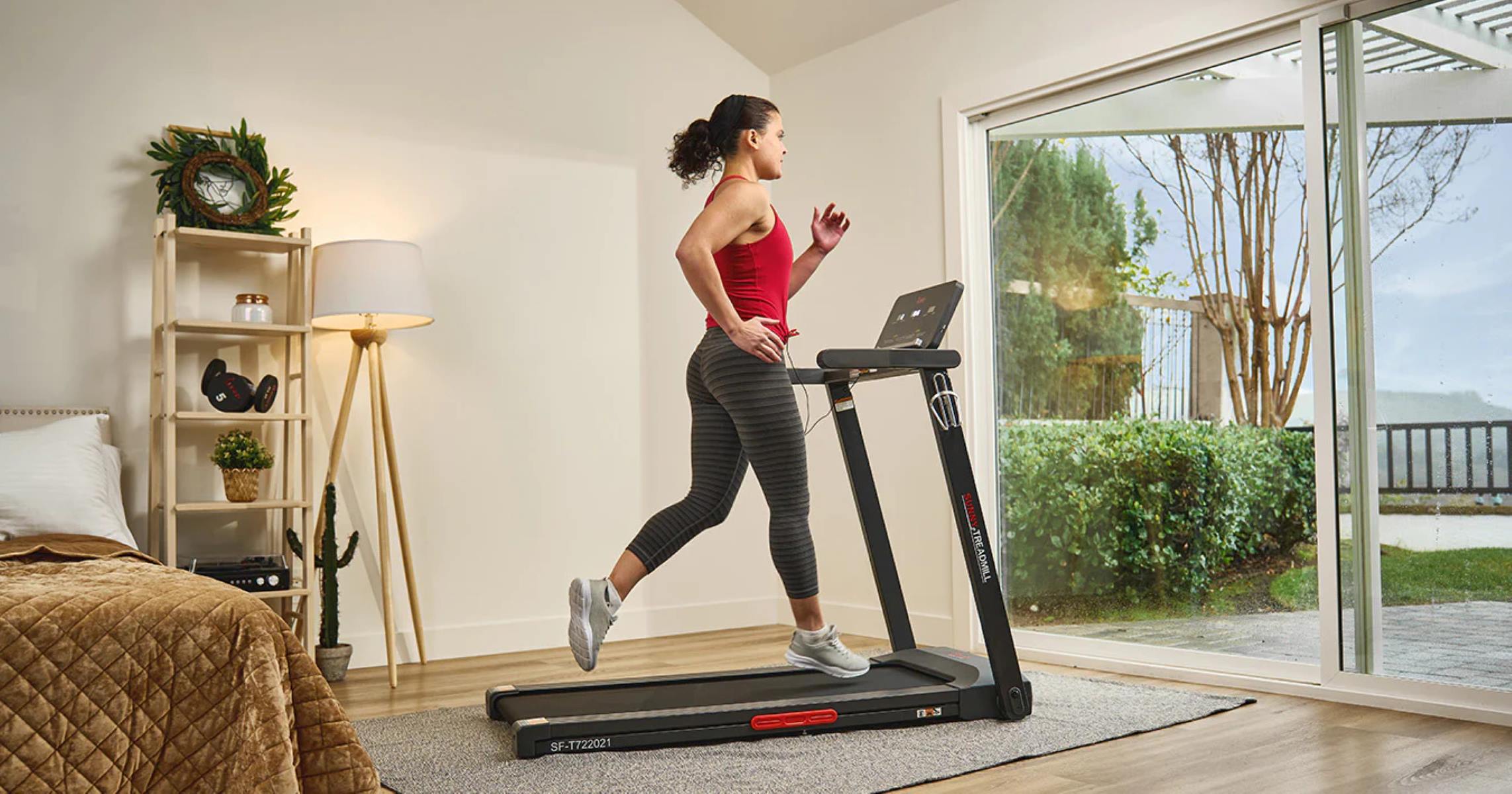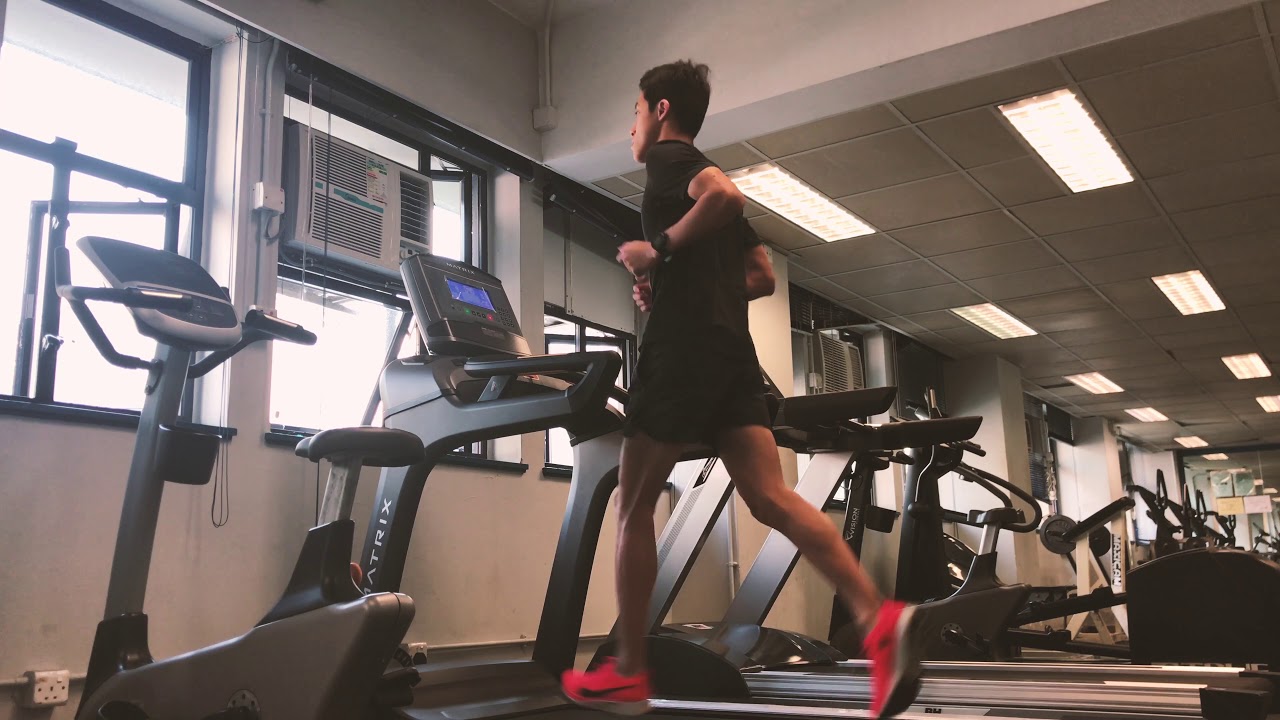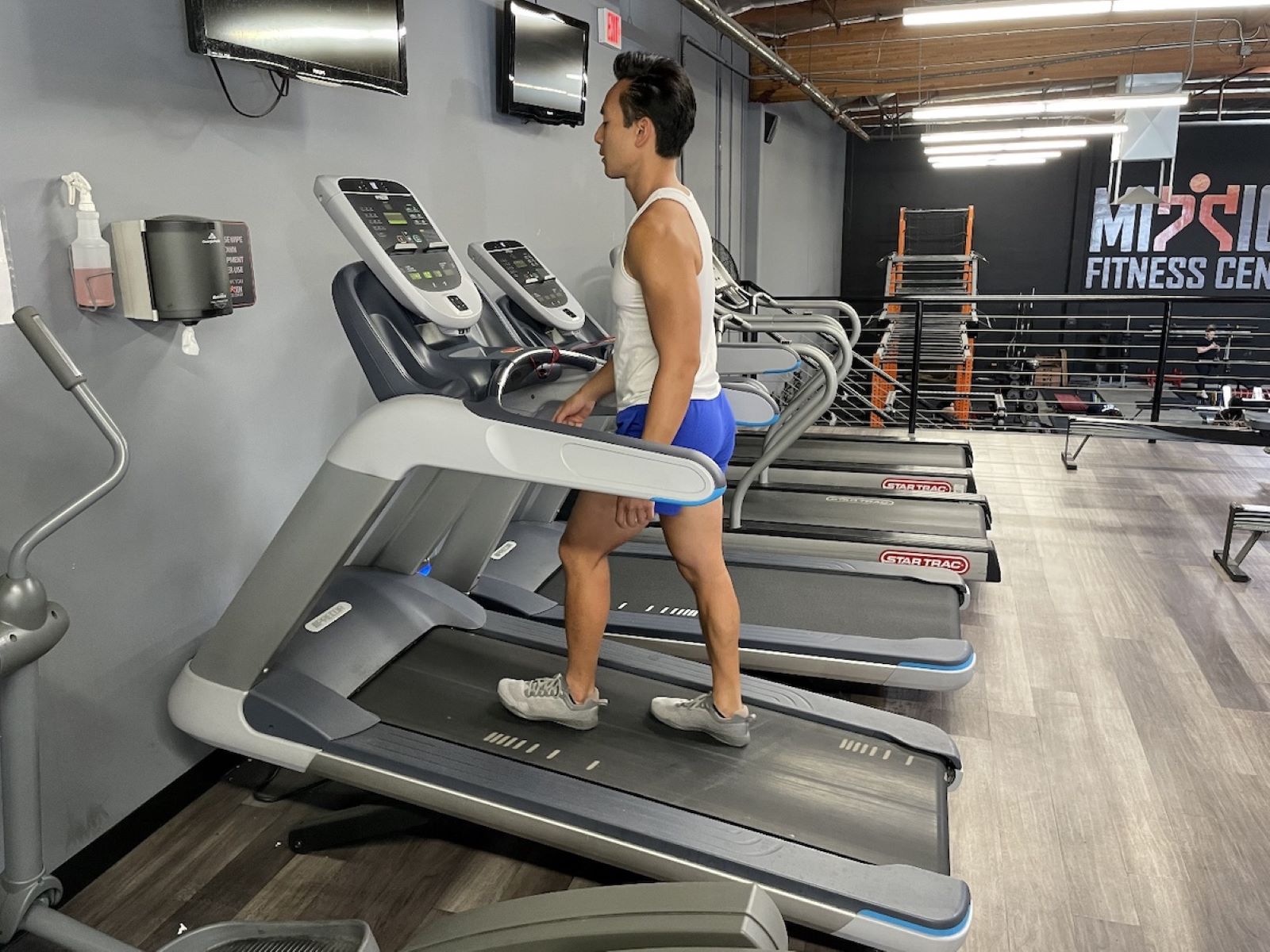

Featured
What Is Incline Percentage On Treadmill
Modified: January 2, 2024
Learn about the featured incline percentage on a treadmill and how it can improve your workout. Find out why incline training is beneficial for attaining fitness goals.
Introduction
When it comes to getting in shape and improving fitness, treadmills have become a popular choice for many individuals. Whether you prefer walking, jogging, or running, a treadmill offers a convenient and efficient way to achieve your fitness goals. One of the key features that sets treadmills apart from outdoor running or walking is the ability to adjust the incline percentage.
The incline percentage on a treadmill refers to the steepness of the running surface. It allows users to simulate different terrains and intensify their workout by challenging different muscle groups. Incline workouts on a treadmill can range from gentle slopes to steep hills, providing a variety of workout options.
Understanding the importance of incline percentage on a treadmill can greatly enhance your fitness journey. In this article, we will explore the definition of incline percentage, its significance in treadmill workouts, how to adjust it, and some recommended incline percentages for various fitness goals.
By the end of this article, you will have a better understanding of why incline percentage is an essential aspect of treadmill workouts and how you can use it to maximize your fitness results.
Definition of Treadmill Incline Percentage
Incline percentage on a treadmill refers to the angle at which the running surface is elevated. It indicates how steep or flat the treadmill surface is compared to a horizontal plane. This adjustable feature allows users to increase or decrease the incline level to simulate walking or running on different terrains, such as hills or slopes.
The incline percentage is measured in degrees or as a percentage. For example, a treadmill may have an incline range of 0 to 15 degrees, or it may be expressed as a percentage, such as 0% to 15%. A higher incline percentage means a steeper incline, while a lower incline percentage indicates a flatter surface.
Most modern treadmills come with automated incline settings, allowing users to easily adjust the incline with the touch of a button. The ability to modify the incline percentage during a workout adds versatility and challenge to treadmill exercises.
It’s important to note that the incline percentage on a treadmill may vary among different brands and models. Some treadmills offer incremental incline adjustments, allowing users to choose specific incline levels, while others provide preset programs that automatically adjust the incline as part of a workout routine.
The incline percentage feature on a treadmill is often accompanied by a decline percentage. The decline percentage allows the running surface to tilt downward, simulating downhill running or walking. While the incline percentage targets different muscle groups and intensifies the workout, the decline percentage can help reduce impact on joints and provide a unique challenge to your fitness routine.
Now that we have a clear understanding of what treadmill incline percentage means, let’s explore why it is important in achieving fitness goals and maximizing workout effectiveness.
Importance of Incline Percentage on Treadmill
The incline percentage on a treadmill plays a crucial role in enhancing the effectiveness of your workouts and achieving your fitness goals. Here are some key reasons why the incline feature is important:
- Increased Calorie Burn: When you increase the incline percentage on the treadmill, you engage more muscles in your lower body, such as your glutes, hamstrings, and calves. This additional effort results in a higher calorie burn compared to walking or running on a flat surface. Incorporating incline workouts into your routine can help you burn more calories in the same amount of time.
- Improved Cardiovascular Fitness: Exercising at an incline percentage challenges your cardiovascular system by increasing your heart rate and oxygen consumption. This gradually improves your endurance and cardiovascular fitness over time. Regular incline workouts on a treadmill can help you build a stronger heart and lungs while improving your stamina.
- Varied Muscle Engagement: Running or walking on an incline activates different muscle groups compared to exercising on a flat surface. The incline forces your muscles to work harder, particularly your glutes, quadriceps, and calves. By incorporating incline workouts into your treadmill routine, you can target and strengthen specific muscle groups, leading to improved overall strength and balance.
- Mimicking Outdoor Terrain: Treadmill incline percentage allows you to simulate outdoor running or walking conditions, such as climbing hills or walking uphill. This mimicking of real-life terrains provides a more realistic and challenging workout experience. It is especially beneficial if you are training for outdoor activities like hiking or running events that involve uphill or varying terrain.
- Preventing Plateau: Adding incline workouts to your treadmill routine can help break through plateaus and prevent stagnant progress. As your body adapts to a specific exercise intensity, incorporating incline training can provide a new challenge and shock your muscles, leading to continued improvements in strength, endurance, and overall fitness levels.
By utilizing the incline percentage feature on your treadmill, you can optimize your workouts, challenge your body in new ways, and achieve your fitness goals more effectively. Whether you aim to lose weight, build strength, or improve your cardiovascular health, incorporating incline training into your treadmill routine can yield remarkable results.
Effects of Incline Percentage on Treadmill Workouts
The incline percentage on a treadmill can have a significant impact on the intensity and effectiveness of your workouts. Let’s explore some of the effects that varying incline percentages can have:
- Increased Intensity: As you increase the incline percentage on a treadmill, the workout becomes more challenging. Walking or running uphill requires more effort from your muscles, resulting in a higher intensity workout. This increased intensity can help you build strength and endurance more quickly.
- Targeted Muscle Engagement: Adjusting the incline allows you to target different muscle groups. Higher incline percentages engage your glutes, hamstrings, and calves more intensely, while lower incline percentages focus on your quadriceps and hip flexors. By adjusting the incline, you can create a well-rounded workout that targets multiple muscle groups.
- Enhanced Cardiovascular Conditioning: Exercising on an incline increases your heart rate and oxygen consumption, making your cardiovascular system work harder. This helps strengthen your heart and lungs, improving your overall cardiovascular fitness.
- Increased Calorie Burn: Running or walking on an incline burns more calories compared to exercising on a flat surface. The added resistance from the incline requires your body to work harder, leading to a higher calorie expenditure. Incorporating incline workouts into your treadmill routine can aid in weight loss and calorie management.
- Simulated Outdoor Training: The incline feature on a treadmill allows you to simulate outdoor training conditions. If you are training for a race or outdoor event, incorporating incline workouts can help you better prepare for the challenges of running or walking uphill.
- Variety and Preventing Boredom: Adjusting the incline percentage during your treadmill workouts adds variety and prevents monotony. It helps make your workouts more engaging and enjoyable by creating different challenges and sensations.
By taking advantage of the incline percentage feature on a treadmill, you can experience these effects and optimize your workouts. Whether you want to increase your endurance, build strength, or burn more calories, adjusting the incline can help you achieve your fitness goals.
How to Adjust Incline Percentage on a Treadmill
Adjusting the incline percentage on a treadmill is a straightforward process that can be easily done during a workout. The exact method may vary slightly depending on the model and brand of your treadmill, but here is a general guide on how to adjust the incline:
- Familiarize Yourself: Start by familiarizing yourself with the control panel of your treadmill. Locate the incline buttons or options that allow you to adjust the incline percentage.
- Start with a Flat Surface: Begin your workout with the treadmill surface at a flat or zero incline. This will serve as your baseline for adjusting the incline during your workout.
- Gradually Increase the Incline: As you progress through your workout, increase the incline by pressing the incline up or increase buttons on the control panel. Most treadmills allow you to adjust the incline in small increments, such as 0.5% or 1% at a time. Alternatively, you may have preset incline programs that automatically adjust the incline for you.
- Listen to Your Body: Pay attention to how your body feels as you increase the incline. If it becomes too challenging or uncomfortable, feel free to lower the incline or return to a flat surface. It’s essential to find a level of incline that challenges you but is still manageable for your fitness level.
- Experiment with Different Incline Levels: To experience a variety of workouts, try incorporating different incline percentages into your routine. For example, you may choose to start with a 3% incline for warm-up, increase it to 7% for a more intense phase, and then lower it back down to 2% for recovery.
- Practice Safety: Always hold onto the treadmill handrails while adjusting the incline, especially when increasing it. This will ensure stability and prevent any accidents or loss of balance.
It’s important to consult your treadmill’s user manual for specific instructions on adjusting the incline percentage for your particular model. Additionally, some treadmills may have additional features, such as customizable programs or automatic incline adjustments, which can enhance your workout experience.
By following these steps and exploring the incline adjustments on your treadmill, you can tailor your workouts to your desired intensity and experience the benefits of incline training.
Recommended Incline Percentages for Different Goals
The recommended incline percentages on a treadmill depend on your fitness goals and the type of workout you want to achieve. Here are some general guidelines:
- Weight Loss: To maximize calorie burn and engage multiple muscle groups, aim for an incline percentage between 1% to 3%. This slight incline can increase the intensity of your workout and help you burn more calories. As you progress, gradually increase the incline to challenge yourself further.
- Endurance and Cardiovascular Fitness: If you’re looking to improve your endurance and cardiovascular health, consider incorporating longer durations at a moderate incline. Aim for incline percentages between 3% to 5% for an extended period of time. This will challenge your cardiovascular system and help build your stamina over time.
- Hill Training: To simulate outdoor hill training, adjust the incline percentage to a steeper level. Intervals or workouts with incline percentages between 6% to 10% are ideal. Begin with shorter intervals and gradually increase the duration as your fitness level improves.
- Muscle Building: If your focus is on building lower body strength and muscle, consider incorporating higher incline percentages. Aim for settings between 10% to 15% to engage your glutes, hamstrings, and calves more intensely. Combine this with a slower pace and shorter intervals for a targeted muscle-building workout.
- Interval Training: Interval training involves alternating between periods of high intensity and recovery. To incorporate incline into your intervals, choose varying incline percentages based on your desired intensity levels. For example, you can sprint at a higher incline (around 8% to 10%) for 1 minute, followed by a recovery jog at a lower incline (around 2% to 3%) for 2 minutes.
Remember, these recommended incline percentages are general guidelines. Listen to your body and adjust the incline levels based on your personal fitness level and comfort. It’s also important to consult with a fitness professional or trainer who can provide personalized guidance based on your fitness goals and capabilities.
By incorporating these recommended incline percentages into your treadmill workouts, you can tailor your training towards specific goals and achieve optimal results.
Common Mistakes When Using Incline Percentage on Treadmill
While using the incline percentage feature on a treadmill can greatly enhance your workouts, it’s important to be aware of common mistakes that people make. Avoiding these mistakes will ensure you get the most out of your treadmill training. Here are some common mistakes to avoid:
- Starting with a Steep Incline: One common mistake is starting your workout with a high incline percentage without properly warming up. This can put excessive strain on your muscles and increase the risk of injury. It’s important to begin with a lower incline or a flat surface and gradually increase the incline as your body warms up.
- Not Utilizing the Full Range of Incline: Some users tend to stay in their comfort zone and never venture beyond a specific incline percentage. To maximize the benefits of incline training, it’s important to challenge yourself and vary the incline levels. Experiment with different percentages and find a balance that pushes your limits while still being manageable.
- Leaning on the Handrails: When using the incline feature, it’s common for people to lean on the handrails for support. However, this can compromise your posture and reduce the effectiveness of the workout. Instead, maintain a proper walking or running form and engage your core muscles for stability.
- Neglecting Proper Form: Another mistake is neglecting proper form while exercising on an incline. This is especially important when the incline becomes steeper. Maintain an upright posture, keep your shoulders relaxed, and avoid leaning too far forward or backward. This will ensure that you engage the correct muscles and reduce the risk of strain or injury.
- Skipping Recovery Periods: It’s common to focus on the higher incline portions of your workout and neglect recovery periods. Recovery is crucial for allowing your muscles to rest and adapt to the workout. Be sure to incorporate recovery intervals at a lower incline or flat surface to give your body time to recover and prevent overexertion.
- Not Listening to Your Body: One of the most common mistakes people make is not listening to their body’s signals. If you experience pain, discomfort, or excessive fatigue during an incline workout, it’s essential to listen to these warning signs and adjust accordingly. Pushing through pain or ignoring signs of overexertion can lead to injuries or setbacks in your fitness journey.
Avoiding these common mistakes will help you make the most of the incline percentage feature on a treadmill. Remember to approach your workouts with caution, gradually increase the incline, maintain proper form, and listen to your body’s needs. By doing so, you can ensure a safe and effective workout that yields positive results.
Safety Precautions When Using Incline Percentage on Treadmill
While the incline percentage feature on a treadmill can enhance your workouts, it’s important to prioritize safety to prevent injuries. Here are some essential safety precautions to keep in mind when using the incline percentage on a treadmill:
- Warm Up Properly: Before engaging in an incline workout, warm up your muscles with some light cardio exercises. Start with a flat surface or lower incline and gradually increase the intensity to prepare your body for the workout ahead.
- Use the Handrails for Stability: While it’s important not to rely on the handrails too heavily, they can provide stability and balance when adjusting the incline or in case of loss of balance. However, avoid gripping them tightly or leaning heavily, as it can compromise your form and potentially lead to injuries.
- Wear Appropriate Footwear: Choose supportive athletic shoes with good traction when using the incline feature on a treadmill. This will provide stability and reduce the risk of slipping or sliding, especially at higher incline levels.
- Maintain Proper Form: Keep a good upright posture while exercising on an incline. Avoid leaning forward or backward excessively, as it can strain your back and compromise your balance. Engage your core muscles to support your spine and maintain stability.
- Monitor Your Heart Rate: Pay attention to your heart rate when using the incline percentage feature. It’s important not to exceed your target heart rate zone, especially if you have certain health conditions or are just starting an exercise program. Consult with your healthcare professional to determine an appropriate heart rate range for your fitness level.
- Stay Hydrated: Drink water before, during, and after your workouts to stay hydrated, especially during incline workouts. Sweating increases with the added intensity, so it’s important to replenish fluids to avoid dehydration. Keep a water bottle nearby or within reach.
- Start with Conservative Incline Levels: If you’re new to using the incline feature, start with conservative incline levels and gradually increase the intensity over time. This allows your body to adapt and reduces the risk of muscle strain or fatigue.
- Listen to Your Body: Your body is the best indicator of what feels right and what may be too much. If you experience any pain, dizziness, or shortness of breath, reduce the incline or stop your workout. Pushing through discomfort can lead to injuries. Always listen to your body and prioritize your safety.
By following these safety precautions, you can mitigate the risks associated with using the incline percentage on a treadmill. Prioritize your well-being and injury prevention, and enjoy the benefits of incline training in a safe and effective manner.
Conclusion
The incline percentage feature on a treadmill is a valuable tool that can enhance your workouts and help you achieve your fitness goals. By adjusting the incline, you can simulate different terrains, engage various muscle groups, increase calorie burn, and improve cardiovascular fitness.
Throughout this article, we’ve explored the definition of incline percentage, the importance of using it on a treadmill, the effects it has on workouts, how to adjust it, recommended incline percentages for different goals, common mistakes to avoid, and necessary safety precautions.
Remember, when using the incline percentage, start with a proper warm-up, focus on maintaining good form, and listen to your body’s signals. Gradually increase the incline over time and push yourself outside your comfort zone to continually challenge your body and prevent plateauing.
However, it’s crucial to prioritize safety above all else. Utilizing the incline feature should not compromise your form or lead to injury. Be mindful of proper posture, use the handrails for stability when necessary, wear appropriate footwear, and stay hydrated throughout your workouts.
By incorporating the incline percentage feature effectively, you can elevate your treadmill workouts to new levels and achieve remarkable results in terms of calorie burn, muscle engagement, cardiovascular fitness, and overall endurance. Always remember to consult with a fitness professional or trainer for personalized guidance specific to your fitness level and goals.
So, whether you’re aiming for weight loss, improved cardiovascular health, endurance training, or muscle building, don’t overlook the benefits of incorporating incline training into your treadmill routine. Embrace the challenge, push your limits, and enjoy the rewards of a more effective and engaging workout experience.
